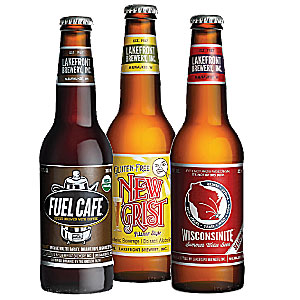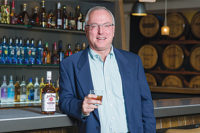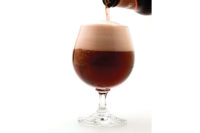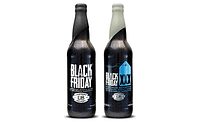Although it’s common for siblings to attempt to out-compete each other as children, it’s less likely that it will result in a profitable business venture for them as
|
adults. But for brothers Russ and Jim Klisch, what started out as a case of sibling rivalry over who could homebrew the better beer turned into a successful beer business.
Now in its 26th year, Milwaukee-based Lakefront Brewery increased its production 21.4 percent last year to 40,496 barrels, compared with the prior year. President Russ Klisch attributes this increase to double-digit growth of the brewery’s core brands as well as expanded brewing capacity. In the past five years, the brewery has invested in new fermenters, new bright tanks, a new bottle filler, a new mash mixer, a new grist mill and quality control equipment, notes Matt Krajnak, director of communications. And in December, the brewery added a new lauter tun and mash hydrator, which have increased brewing efficiency and shortened brew times, he adds.
Russ Klisch also credits the brewery’s growth to Milwaukee beer wholesaler Beer Capitol, which distributed 237,000 case equivalents of Lakefront Brewery beer in 2013. This demonstrates 17.8 percent growth compared with the previous year, he adds.
Furthermore, Krajnak attributes last year’s growth to strong draft sales. By signing up with a keg management company, the brewery was able to focus on its “craft” and expand its out-of-state keg distribution, he says.
Trendy traditions
In addition to these operational advances, catering to niche markets has aided the popularity of its beers across its territory of 37 states, Canada, Israel, Australia and Japan. For instance, all of Lakefront Brewery’s beers are designated kosher, which helped them achieve a small presence in Israel, Krajnak says. Additionally, he points out that Lakefront Brewery was the first to launch a government-approved gluten-free beer in the United States: New Grist. Prior to its release, any product labeled “beer” in the United States was required to contain at least 25 percent malted barley, he explains. Therefore, Russ Klisch successfully petitioned the Alcohol and Tobacco Tax and Trade Bureau to create a new category of gluten-free beer, he says.
New Grist was specifically created because a member of the head brewer’s family was diagnosed with Celiac disease. Although this disease affects less than 1 percent of the U.S. population, according to Chicago-based Mintel, the demand for gluten-free beer turned out to be larger than the brewery imagined. Today, the pilsner-style, gluten-free beer is Lakefront’s best-selling product, Krajnak notes.
The brewery also was the first to introduce a U.S. Department of Agriculture certified organic beer, he says. Organic Extra Special Bitter (E.S.B.) Ale made its debut in 1992. Recently, the brewery transitioned its Fuel Cafe stout brewed with coffee to contain all certified-organic ingredients as well. As a result, the product’s sales have skyrocketed, Krajnak says.
“With Fuel Cafe, we were already using organically grown coffee, and it was a matter of just taking the other steps and finding suitable ingredients from the organic line in order to keep the flavor profile the same,” he says.
Also demonstrating its emphasis on ingredients and sustainable sourcing are its Local Acre and Wisconsinite beer brands, which both launched within the past four years and feature Wisconsin-grown ingredients. With the majority of its sales coming from its home state of Wisconsin, it made sense to leverage the state’s ingredients to make locally sourced beers, Krajnak notes. Local Acre beers are made with all Wisconsin-grown ingredients except for the yeast strain, and Wisconsinite beer is made with 100 percent Wisconsin-grown ingredients including an indigenous yeast strain cultured from Wisconsin-grown barley, he says.
In total, the brewery offers 12 year-round beers, eight seasonal beers, and an experimental, rotating style series called My Turn, which gives full-time employees of the brewery a chance to brew their own beer.
Last year, the brewery got even more creative with its 25th Anniversary Series. Within the series, its limited-edition brandy-barrel-aged Imperial Pumpkin lager marked the company’s first foray into barrel-aged beers.
This fall, it hopes to introduce a beer similar to its Imperial Pumpkin lager, Krajnak says.
Additionally, Lakefront Brewery is working to expand distribution into Pittsburgh and Texas, he adds. Thus far, the company’s humorous brewery tours have been its best marketing tool, bringing approximately 2,000 local and international consumers to the facility each week, he notes. Social media also has helped to get the word out on a national level, he adds.
“Right now, craft beer is in its second boom,” Krajnak says. “Nearly everyone throughout the industry is experiencing double-digit growth. Sadly, what goes up must come down, but I think we’ve positioned ourselves for continued success and sustainable growth after the boom.”





